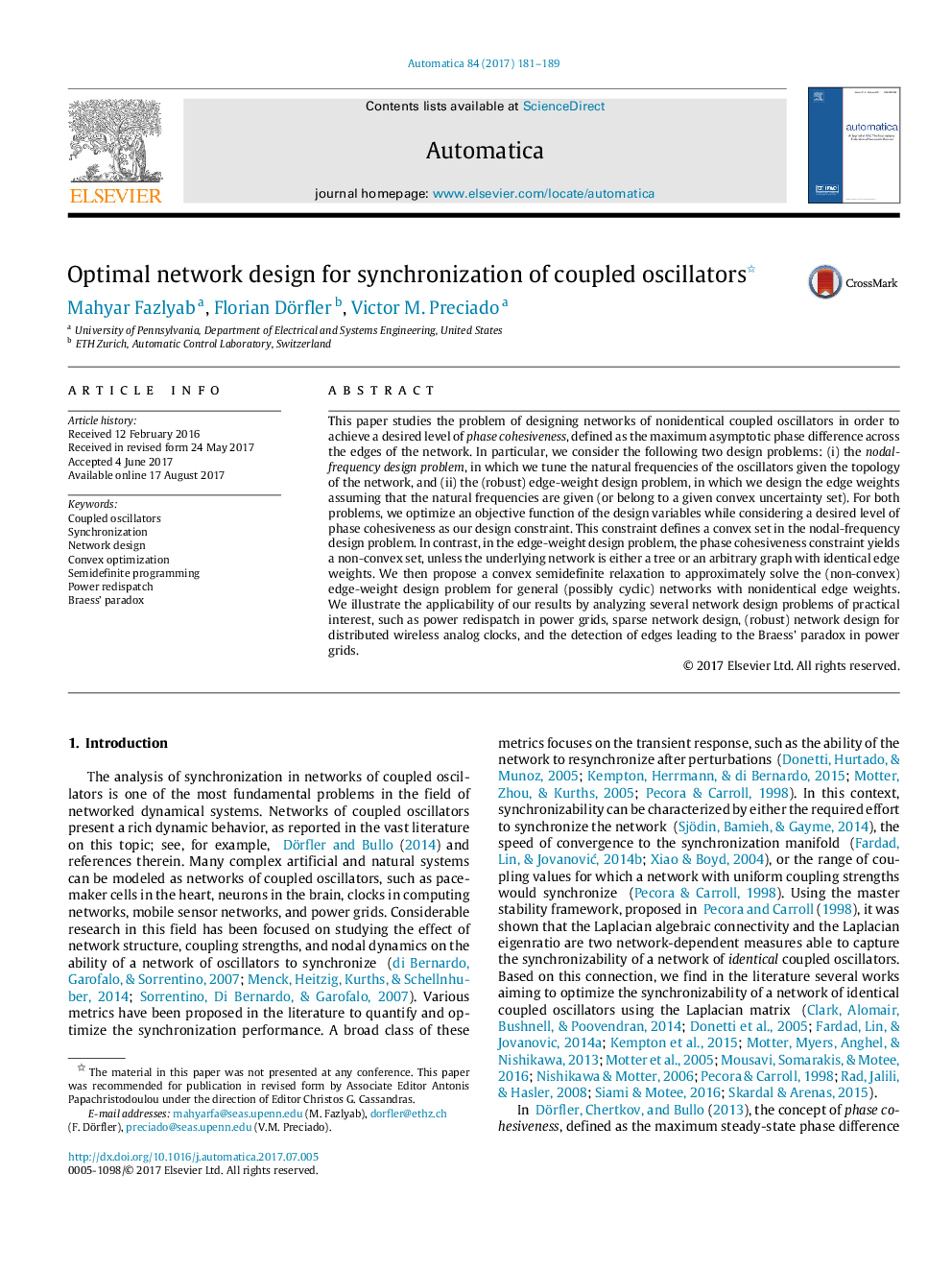ترجمه فارسی عنوان مقاله
طراحی شبکه بهینه برای هماهنگ سازی اسیلاتورهای متصل شده
عنوان انگلیسی
Optimal network design for synchronization of coupled oscillators
| کد مقاله | سال انتشار | تعداد صفحات مقاله انگلیسی |
|---|---|---|
| 159555 | 2017 | 9 صفحه PDF |
منبع

Publisher : Elsevier - Science Direct (الزویر - ساینس دایرکت)
Journal : Automatica, Volume 84, October 2017, Pages 181-189
ترجمه کلمات کلیدی
نوسانگرهای متصل هماهنگ سازی، طراحی شبکه، بهینه سازی محدب، برنامه نویسی نیمه تمام ارسال مجدد نیرو، بریس ؟؟؟؟ پارادوکس،
کلمات کلیدی انگلیسی
Coupled oscillators; Synchronization; Network design; Convex optimization; Semidefinite programming; Power redispatch; Braessâ paradox;

